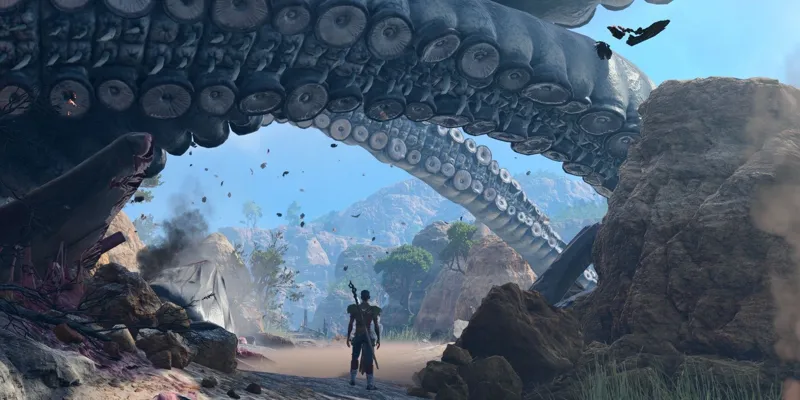Larian Studios' CEO Swen Vincke has disclosed that the initial design of Baldur’s Gate 3 included entirely different mechanics for death and revival. These discarded elements would have led players on an immersive exploration of the afterlife, enriching the lore and narrative of Baldur’s Gate 3.
Despite achieving immense success with over 10 million copies sold and numerous Game of the Year accolades, Larian Studios dropped a bombshell recently by announcing their withdrawal from the Baldur’s Gate series. With the revelation that Larian won't be working on any downloadable content for the critically acclaimed fantasy RPG, fans craving more Baldur's Gate content have been eager to uncover hidden features that didn't make it to the final game.
Modders have started to unearth traces of scrapped content, such as indications of a potentially axed companion character in Baldur's Gate 3. Players have also noted the extensive changes made during the game's three-year early access period. However, during PC Gamer’s RPG Roundtable podcast, Larian's CEO shared a fascinating mechanic that was left out of the game. The original plan was to send deceased characters on a journey to a whole new realm. Vincke explained, 'Whenever you died, you were supposed to go to the Fugue Plane, while the rest of your party would continue in the material plane.' In the realm of Dungeons & Dragons, the Fugue Plane serves as an intermediate realm linking the mortal world of Forgotten Realms with various afterlives, where departed souls assemble to receive judgment and be allocated to their respective heavens or hells.
Delving into the Fugue Plane in Dungeons & Dragons
- The Fugue Plane acts as a transitional space connecting the mortal realm to different afterlife realms.
- Deceased souls congregate in this space for judgment and allocation to their specific afterlife destinations.
- Larian initially envisioned sending deceased characters to the Fugue Plane, although this concept was abandoned in the early stages of development.
Venturing through the Fugue Plane would have provided a prime opportunity to delve into the intricacies of Baldur’s Gate 3's rich mythos. Characters aligned with good deities could have pled for rebirth through spiritual clerics and paladins, while malevolent individuals might have faced repercussions for their malevolent deeds. With the remaining party members staying in the material world, players could have engaged in high-stakes rescue missions to save their comrades, akin to the thrilling descent into Avernus in Baldur’s Gate 3.
In the current game version, death is easily reversible unless players opt for the challenging permadeath Honor Mode in Baldur’s Gate 3. While a full party wipe necessitates reloading a previous save, a single character's demise can be swiftly rectified using abundant Revivify scrolls, spells, or a visit to the camp's resident undead healer, Withers, possibly a deity of death. A prolonged journey into the underworld would have added depth to this otherwise straightforward mechanic. Although fans won't experience this immersive feature, Larian has just unveiled the release timeline for the highly anticipated Deluxe Editions of Baldur's Gate 3.

